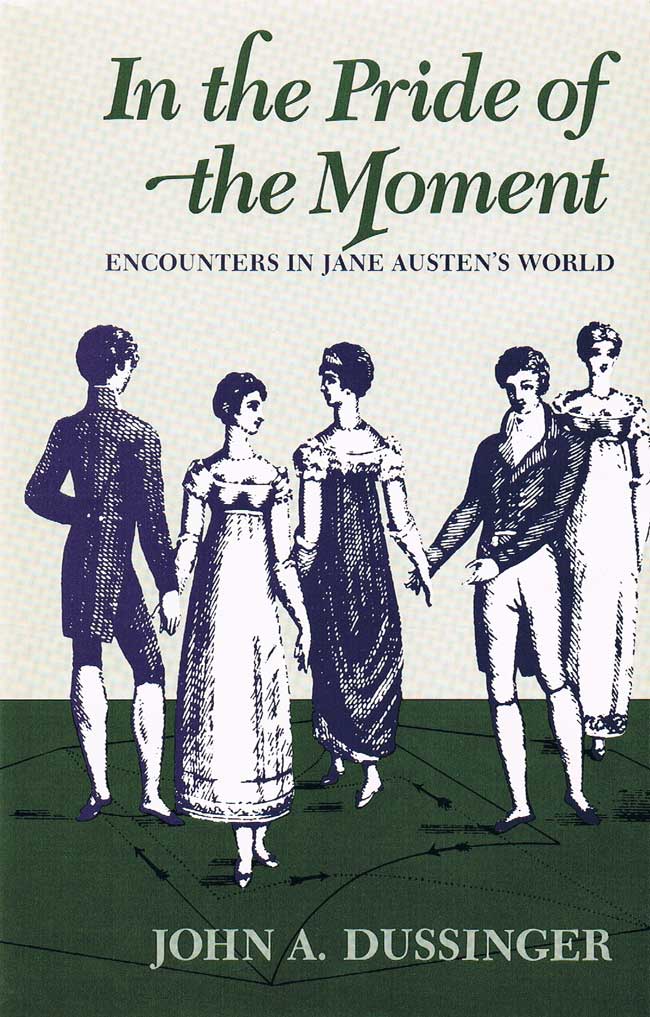In the Pride of the MomentEncounters in Jane Austen’s WorldJohn A. Dussinger |
 Jan 1990 Literary criticism/British 213 pp. 6x9  $24.95 paper 978-0-8142-5318-2 Add paper to shopping cart Shopping Cart Instructions Review/Change Shopping Cart & Check-out | |||
|
John A. Dussinger argues that the strength of Jane Austen’s writing is found in the minute encounters that reveal a character’s life rather than in the larger design of the story. In the Pride of the Moment contests the familiar view that Austen’s novels are stylistically polished but lacking in substance by showing that they give unusual significance to the most ordinary events. Austen’s narrative strategy brings her characters together in an encounter, a radically focused interaction revealing nuances of behavior. The encounter conveys symbolically the participants’ attitudes and intentions; and if the nominal activity in the scene is significant in forming political alignments, it also defines the alienation of the individuals outside that frame of reference. Such deliberately choreographed performances reinforce the idea that the principal action in Austen’s world is talking. The most imjmediate quality of such oral communication is the sense of its circumstantial uniqueness, its ability to place a character both as a social-class member and as an individual. When Austen began writing in the 1790s, she had available ample models in Defoe, Richardson, Fielding, Sterne, Smollett, Fanny Burney, Maria Edgeworth, Charlotte Smith, Ann Radcliffe, and many other authors in the Steventon parsonage; but most striking from the first juvenile spoofs to her last, incomplete novel is her radically critical eye toward literary form in general and novelistic discourse in particular. Dussinger asserts that Austen, like these eighteenth-century novelists, found that imitating speech was a form of parody, and she employed it to ridicule affected social behavior as well as such literary fads as Gothic horror. But Austen is the first English novelist to grasp the full implications of parody within the text, creating not only humorous characters who seem to live by words alone but also derisive characters who parody the original comic dialogue. Austen’s extraordinary ear for timbre in conversation transforms mere gossip into a vibrant parodic art. Dussinger concludes by entreating Austen readers to listen carefully to how the words are spoken in her novels, for her characters may not be “speaking as they ought.” Though all the major Austen characters should exhibit prowess as listeners, from the beginning both Elizabeth Bennet and Emma Woodhouse misconstrue what others say and suffer as a consequence. To some extent all six completed novels focus on some problems in communication—several characters in each story have secrets to keep or to reveal and pose a challenge to the heroine’s powers of interpretation—and in each, Austen’s adroit narrative craft in summoning the implied self in the spoken word is evident. John A. Dussinger is Associate Professor of English at the University of Illinois at Champaign-Urbana. He is the author of
The Discourse of the Mind in Eighteenth-Century Fiction and several essays on eighteenth-century prose. | ||||

